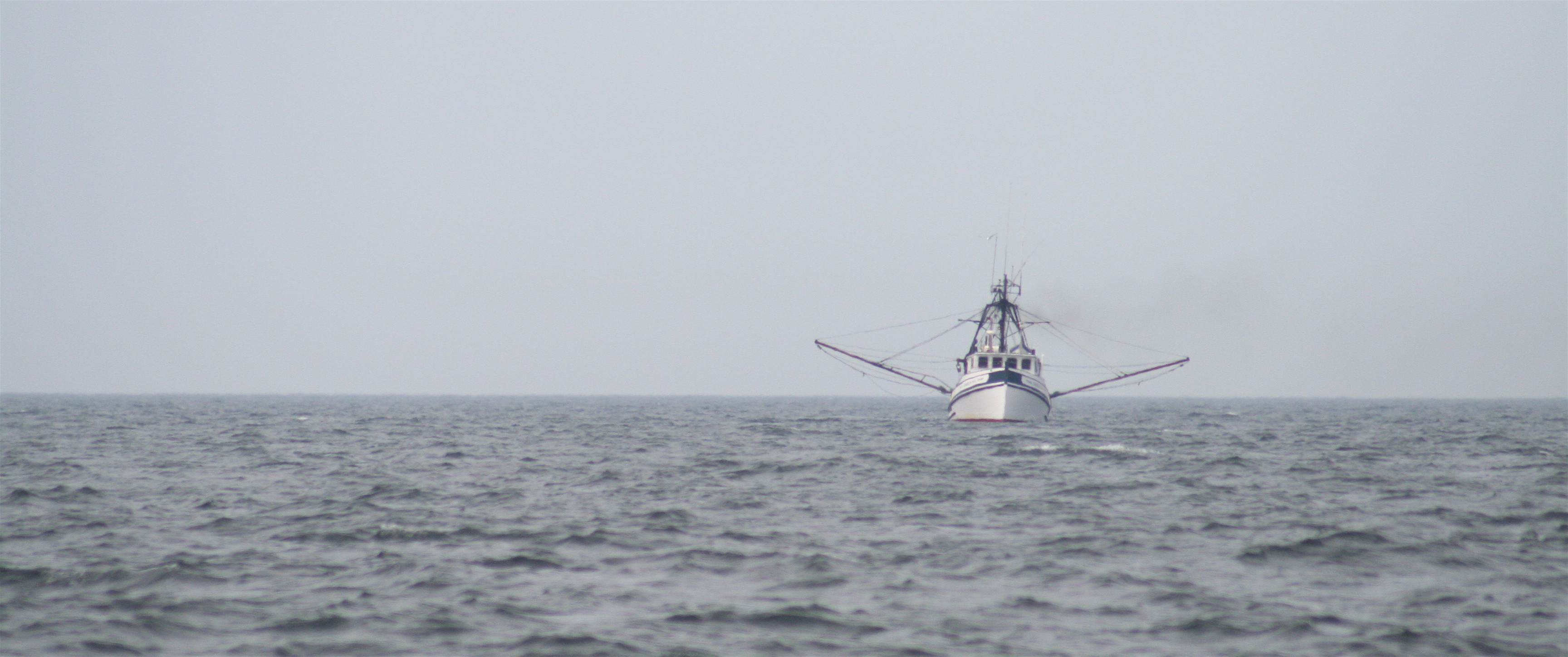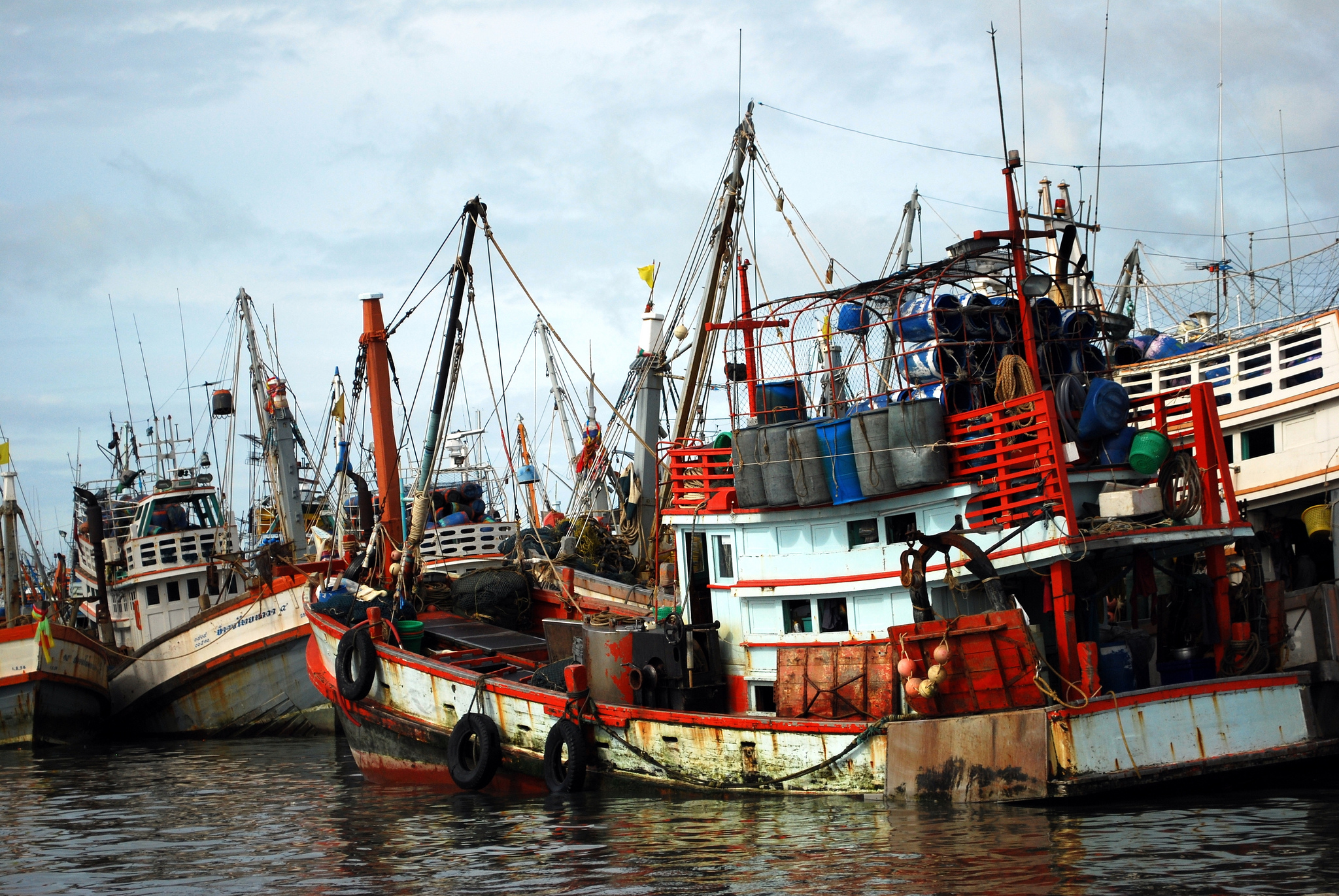If human rights abuses take place where neither laws nor media exist, do they provoke an outcry? Thanks to some intrepid reporting by Ian Urbina for the New York Times, yes, they do. His piece “Sea Slaves: The Human Misery that Feeds Pets and Livestock“, part of his series “The Outlaw Ocean” on crime on the high seas, uncovers the extreme bonded labor practices occurring on many Thai fishing vessels in the South China Sea.

Though there is growing pressure from Americans and other Western consumers for more accountability in seafood companies’ supply chains to ensure against illegal fishing and contaminated or counterfeit fish, virtually no attention has focused on the labor that supplies the seafood that people eat, much less the fish that is fed to animals.
The harshness of practices – including kidnapping, bringing aboard drugged recruits, and most commonly ‘credit bondage’, the use of previously accrued debt to prevent laborers from leaving – has risen in recent years as a perfect storm has formed:
Demand for small catch, to be used in dog and cat food, and feed for farm-raised fish, chicken and pigs, is remaining steady, while fishing stocks are getting more and more elusive. In addition, fuel costs are rising, which means that fishing vessels wouldn’t be profitable anymore if they were to come back to land regularly. Therefore, a system (under the name of “trans-shipment”) has developed where ‘mother ships’ visit smaller vessels based in the high sea, pick up their catch and refuel them with supplies – including men. These boats, in turn, stay for years in the middle of the ocean on ungoverned territory that are at any time two or three hops away from land, away from any kind of oversight and control.

These boats, out to sea for up to two years or more, become virtual prisons on which the trafficking victims endure inhumane working conditions, and physical abuse. Death at sea is frequently reported, sometimes at the hands of the Thai boat captains. The only way to escape is to jump ship when the boat goes ashore for registration/ documentation purposes in places like Sarawak, Malaysia. – UN
The story, told through the eyes of the Cambodian migrant worker Lang Long, shows horrid conditions onboard, and a disregard for human dignity and welfare that are appalling. Many workers had never seen the ocean before; cannot swim; do not speak the language of the crew; and are young men, some only 15 years old. They are confronted with days of 18 to 20 h of hard physical labor, pest-infested living spaces, and a daily bowl of rice as nourishment. As a UN report documents, killings at sea by hands of the captain are not unusual either. And if they manage to escape in Malaysia, it is likely they will continue in bonded labor conditions after being retrafficked, this time onto palm oil or rubber plantations.

Checking boats for human rights abuses is difficult. Most fishing vessels are exempt from international rules requiring the onboard tracking systems used by law enforcement. Marine officials in Thailand, Malaysia and Indonesia said that their navies rarely inspect for labor and immigration violations. Authorities in those countries added that they lack boats and fuel needed to reach the ships farthest from shore that are most prone to using captive labor.
Once you digest the horrifying conditions, usually your attention shifts to solutions. Here, however, the solution is difficult, as this is no-man’s-land: few national laws apply in this space, and even those that do – with regard to the flag the ship is sailing under – are barely enforced for lack of willingness and resources. The Thai government has been particularly unwilling to enact stricter immigration and forced labor laws, including because some sectors of their industry, including fishing, have acute labor shortage problems that they can only solve with migrant workers.
Still, international efforts are underway to address this problem, which spans countries and industries. According to the ILO, there are currently an estimated 21 million forced labour victims worldwide. Modern forms of slavery contribute up to $150 billion in illegal profits in the private economy each year. In 2014, a new protocol to the ILO’s Forced Labor Convention was adopted that created “new obligations to prevent forced labour, to protect victims and to provide access to remedy, such as compensation for material and physical harm. […] It requires governments to take measures to better protect workers, in particular migrant labourers, from fraudulent and abusive recruitment practices and emphasizes the role of employers and workers in the fight against forced labour.” Guess who was the only country who didn’t sign it (at first)? Thailand. Go figure.
For some interesting background on the process of reporting such a story, check out Urbina’s Longform podcast as well as the New York Times Insider story. The gist? You need a lot of nerve, tenacity, and an ability to tolerate rats. You go, Urbina.